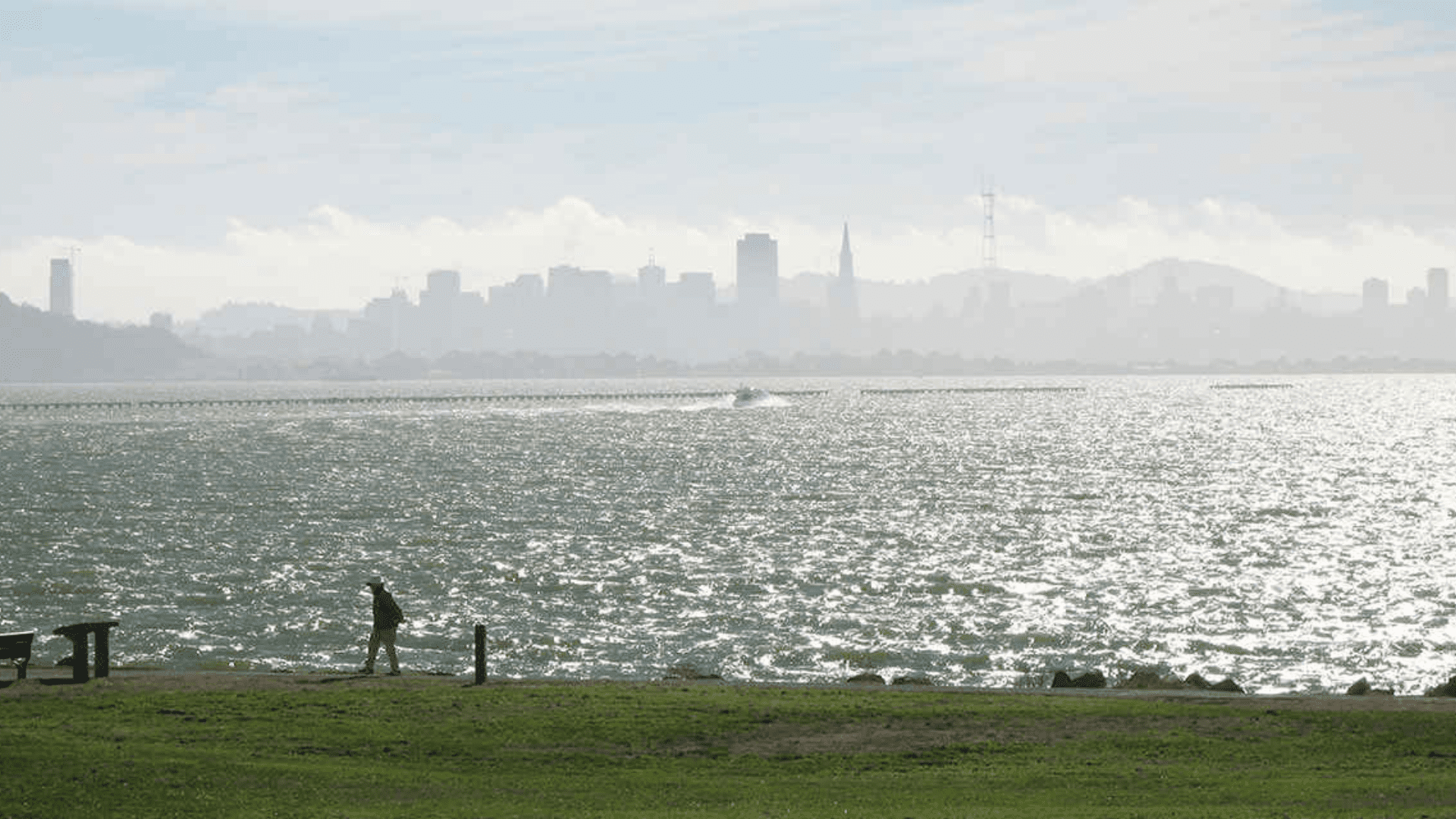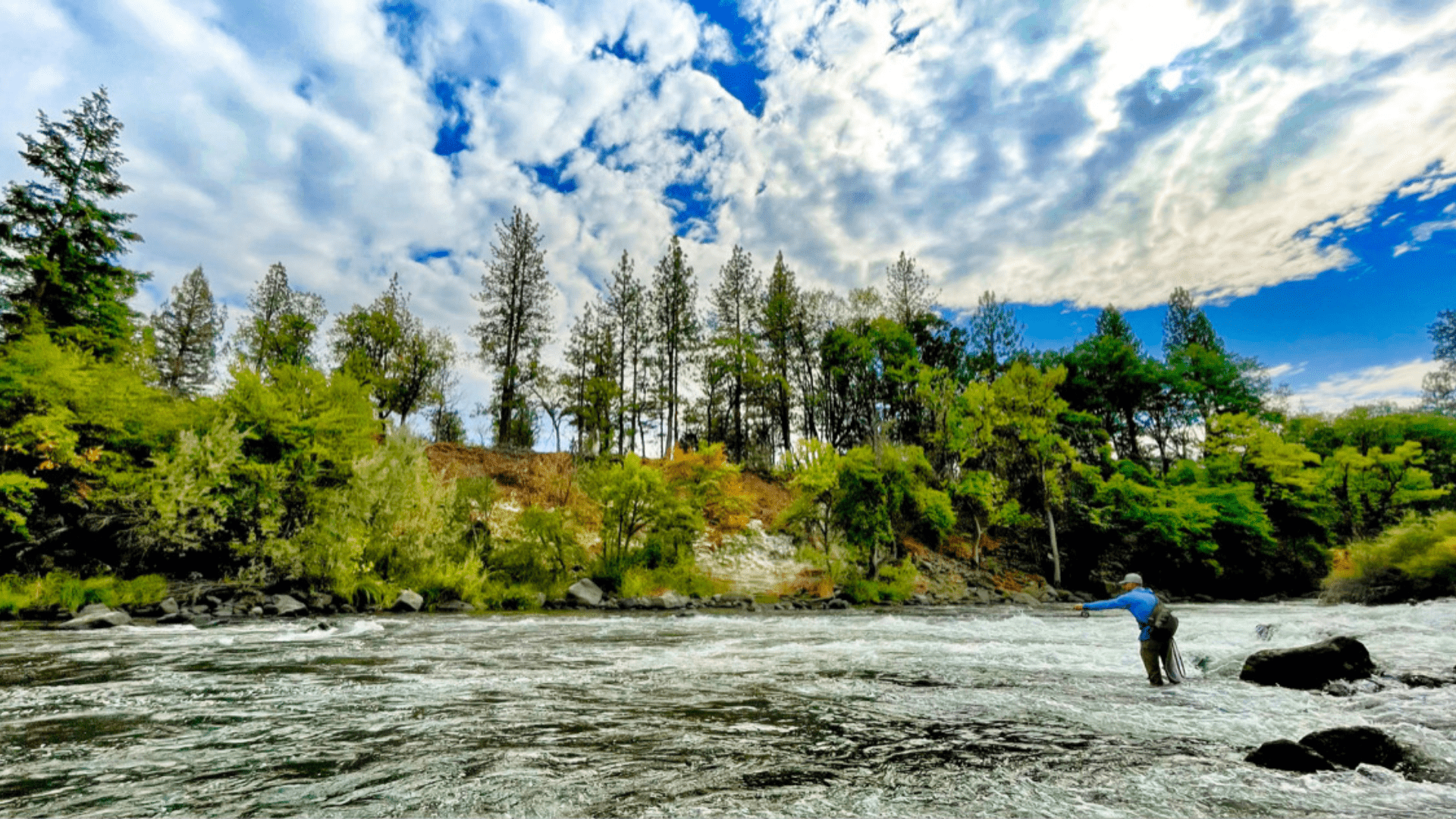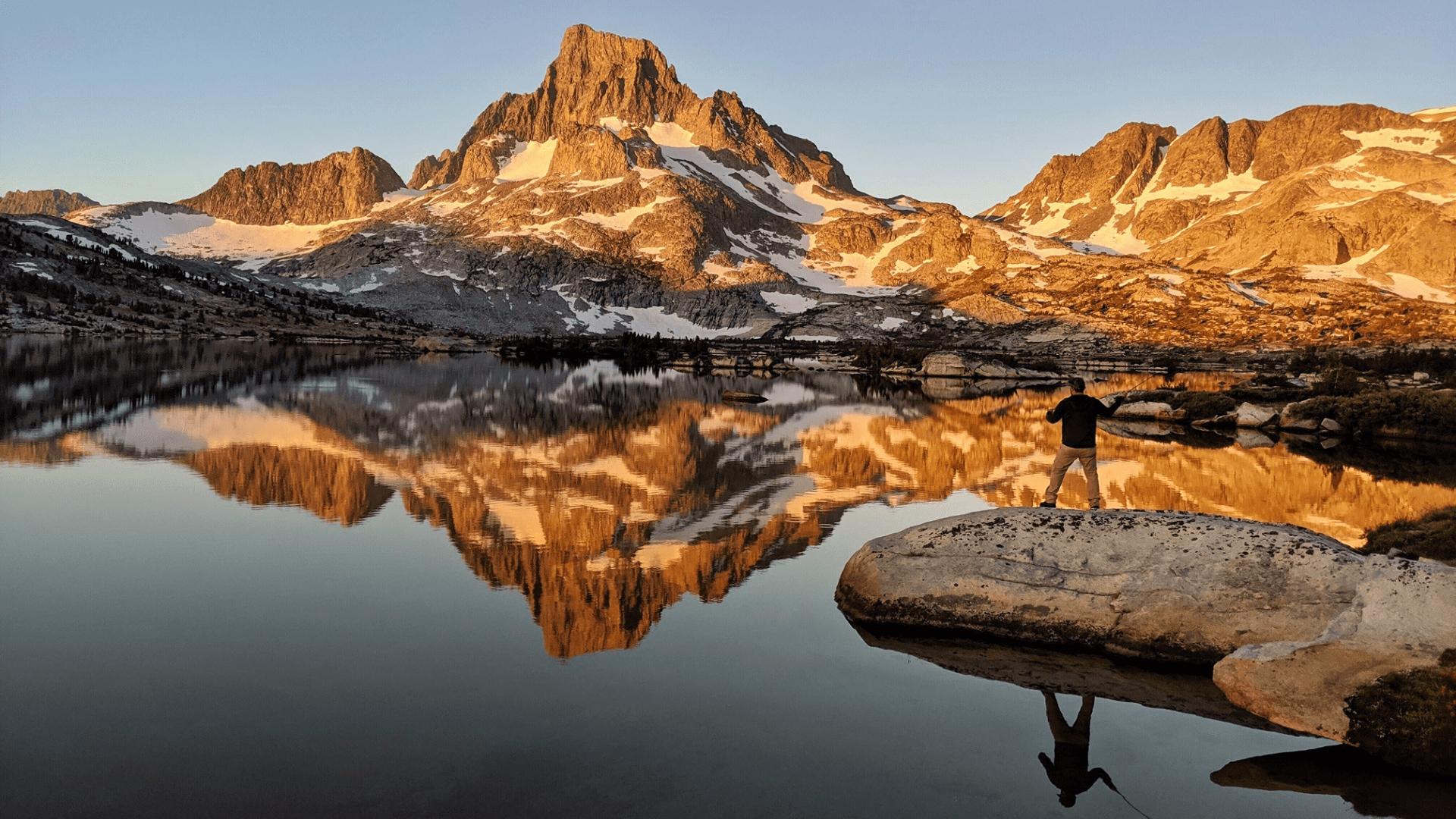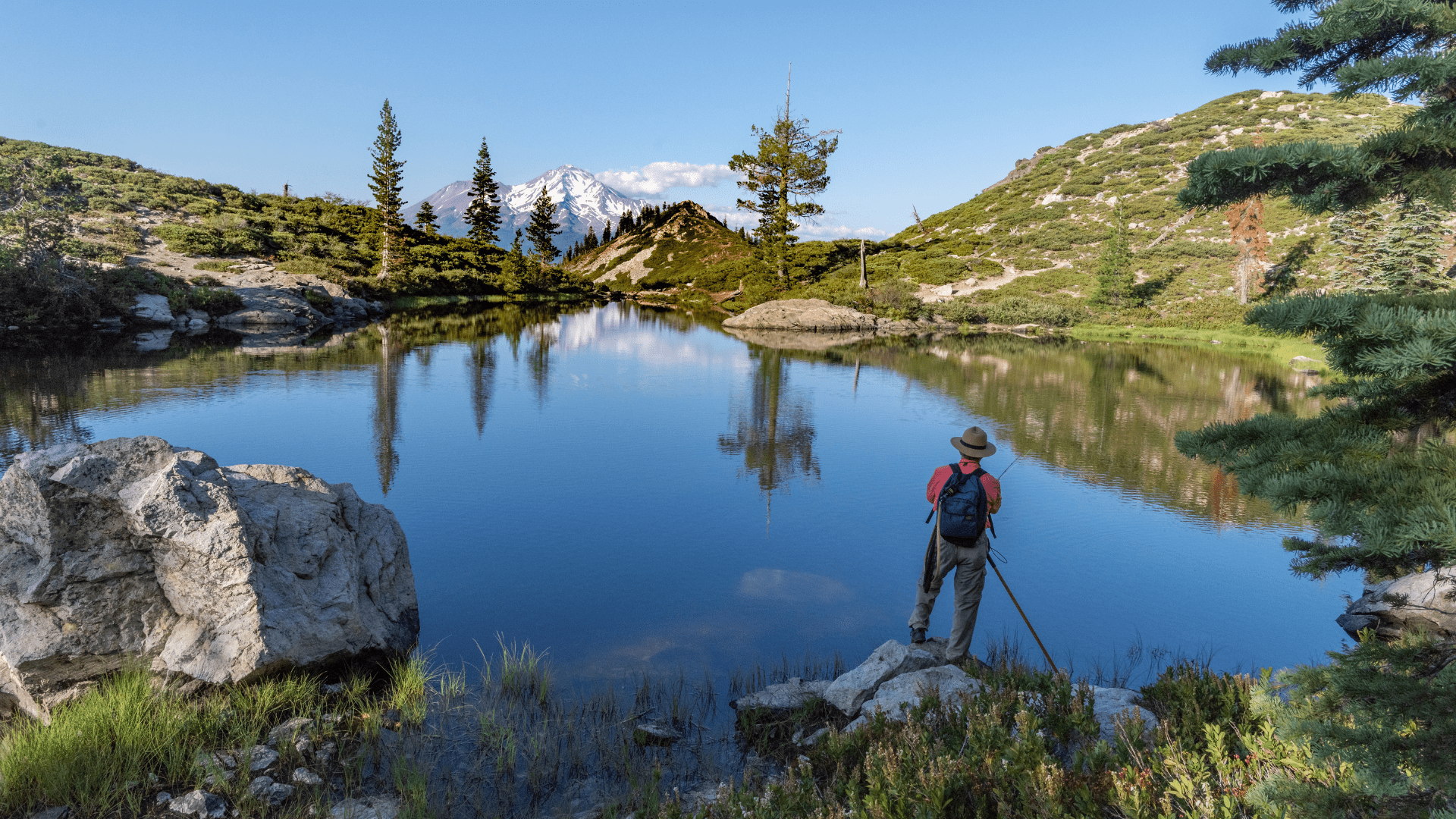Watch CalTrout's video on our Prairie Creek Restoration Project.
A Story of Ecological and Cultural Hope
Prairie Creek, Humboldt County, CA

By Mary Burke, CalTrout North Coast Program Coordinator
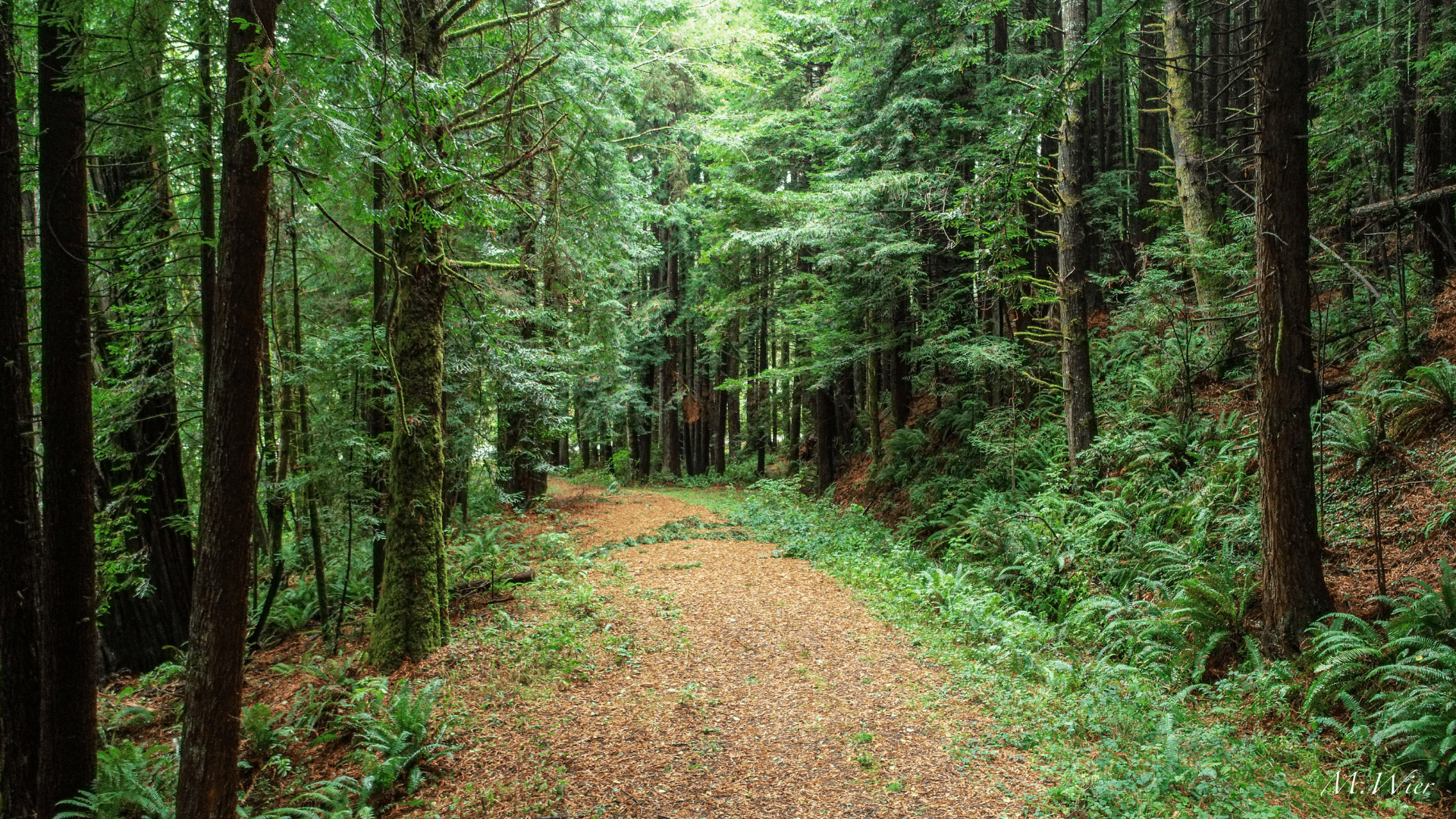
My eyes follow the trunks of the nearby towering redwoods all the way to the sky.
From the tops of these trees, I would see the vast Pacific Ocean three miles to the west and the Redwood Creek valley as it winds up to its source waters to the southeast. I am engulfed in the cool coastal air.
Background Photo: Mike Wier
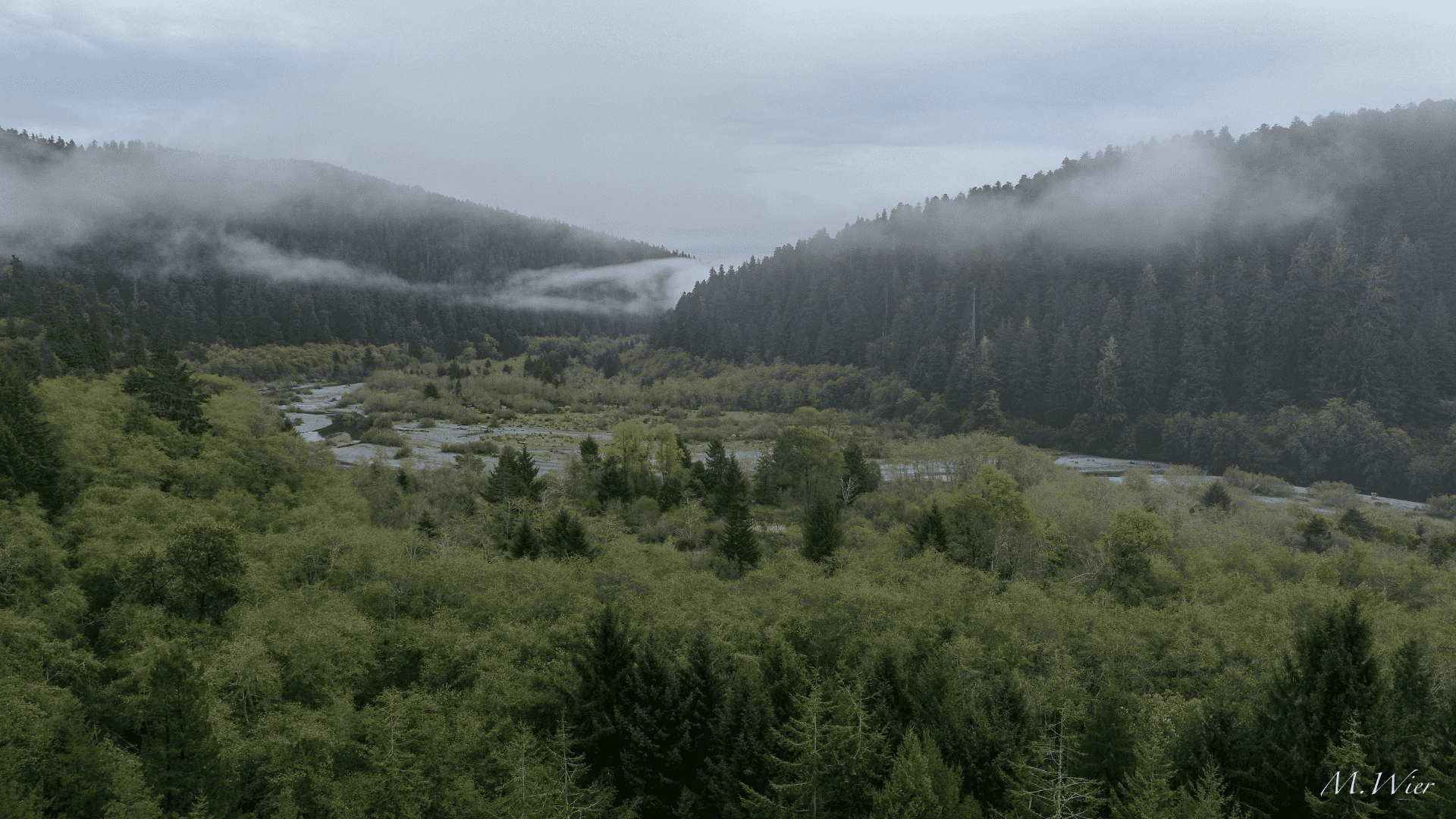
I am standing amongst coastal redwoods and the lower end of a productive spawning tributary in Humboldt County, just north of the town of Orick, off of Highway 101. Behind a chain link fence, lie 20 acres of a former mill site and more acres of productive grazing pasture. Standing here, I feel the expansiveness and important connectivity that exist here for the fish, water, and people.
I am excited to share this story with you: the beginning of a vital transformation.
Background Photo: Mike Wier
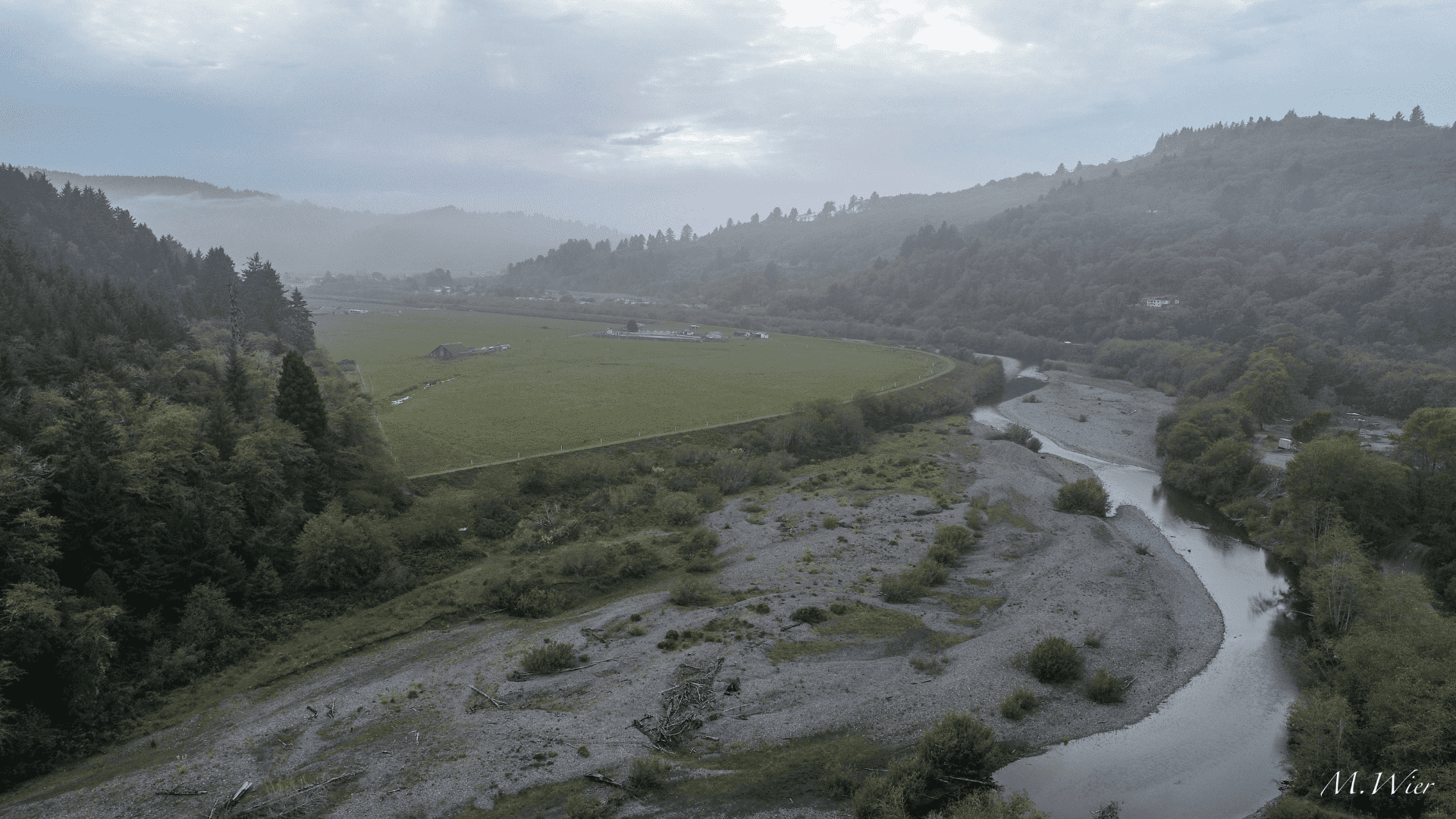
Two waterways meet near the spot where I stand.
This is the confluence point of two waterways now known as Prairie Creek and Redwood Creek, both their names being descriptors of the environment surrounding them. The diagram below shows the watersheds for both Redwood Creek and Prairie Creek, courtesy of Save the Redwoods League.
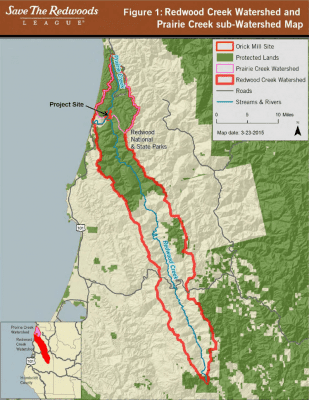
Background Photo: Mike Wier

This site is many things...
Foremost, this is the ancestral and unceded homelands of the Yurok Tribe.
This area held long-standing village sites where communities fished and hunted, raised their families, and lived well. The site is resilient: since Euro-American settlement, it has been ranched, logged, and developed into a mill site. It is an important place to many species of fish including Chinook and coho salmon, steelhead, coastal cutthroat trout, and other ecologically and culturally important species such as eulachon and lamprey. A place steeped in historical and ecological meaning, it is now the site of the Prairie Creek Floodplain Restoration Project, and part of an ambitious collaboration to revitalize the site through a habitat restoration and public access initiative.
This is a story of ecological and cultural hope. This is a story about reconnecting a creek to its floodplain through collaborative effort, supporting the Yurok Tribe to access a piece of their ancestral territory, and about connecting you – the public – to a future southern gateway of Redwood National and State Parks.
History of the Prairie Creek Site
The property was purchased by Save the Redwoods League in 2013. The League immediately cast a wide net to pull in agency and Yurok Tribe representatives, CalTrout, and a team of local contractors to develop a restoration plan. Together we have done just that.
Why does this site need to be restored? Let’s focus in on the ecological status of the site:
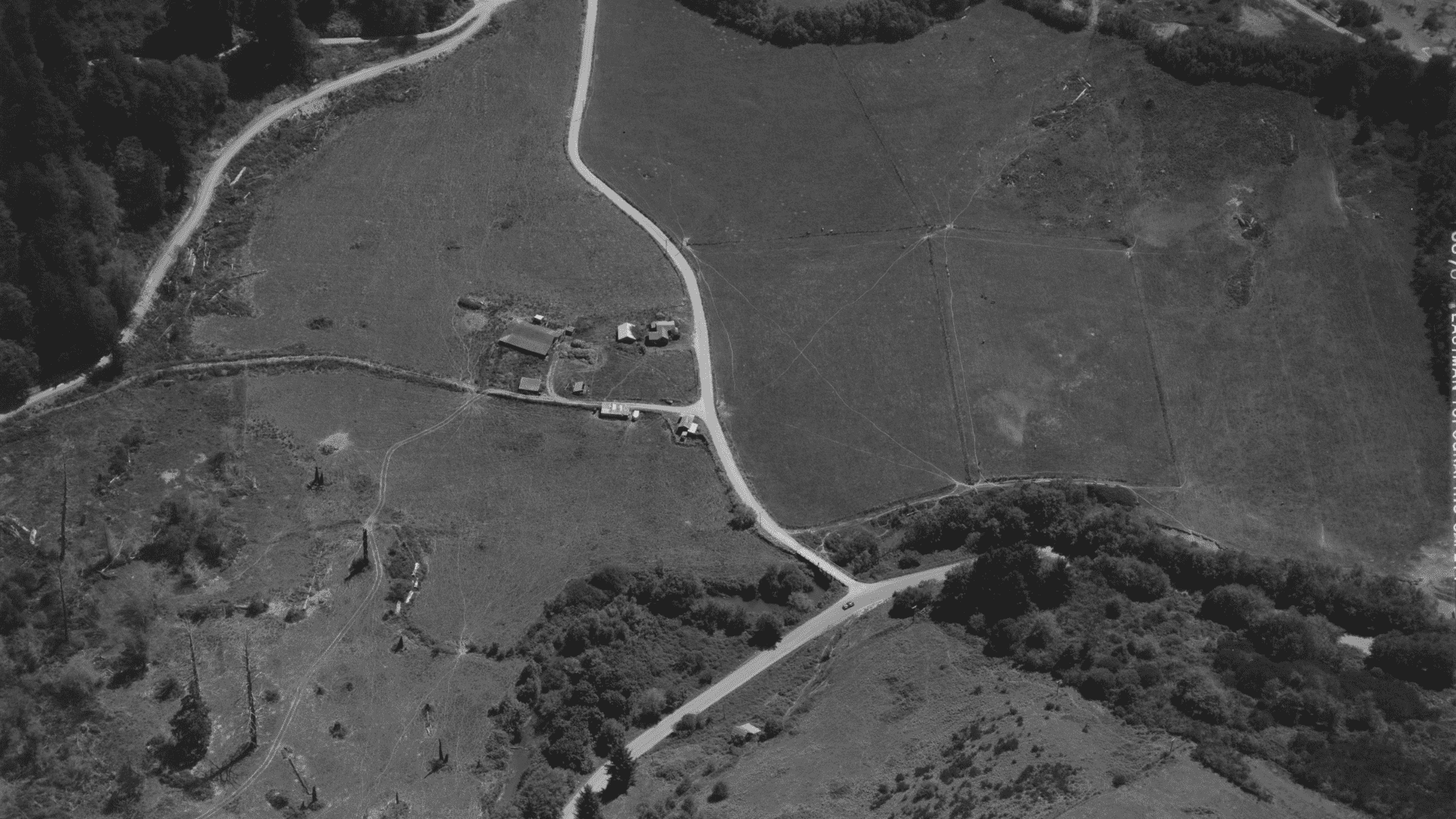
Prior to European settlement, Redwood Creek meandered across the lower half of the project area, scouring and depositing its riverbed and nudging Prairie Creek into the lowest ground in the western side of the valley. With settlement of the region came new and impactful land management practices for timber extraction. Roads were built and consequently Highway 101 and Bald Hills Road now constrain Prairie Creek to enter and exit the site under upstream and downstream bridges. Orick Mill A was built between 1958 and 1960, and the property was paved and graded to support mill operations including housing and logging roads. The site also supported a turn of the century homestead that grazed livestock on the fertile floodplain pastures.
Background Photo: Mill A Site, 1947, courtesy of Humboldt City Public Works Natural Resources
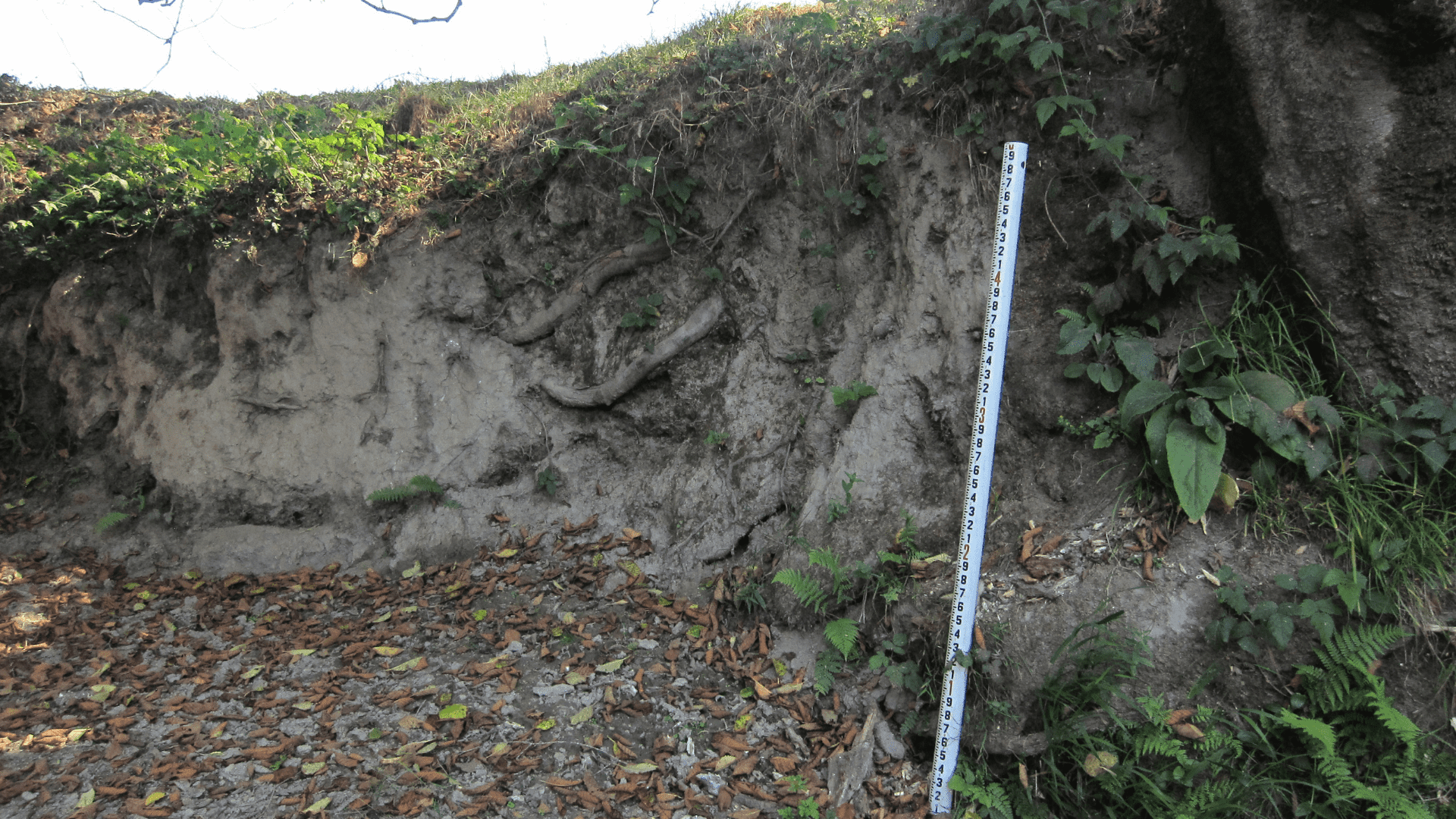
Since the industrial timber era, when timber harvest practices destabilized the hillslopes upstream, an increase in sediment has been delivered and deposited on the floodplain during storm events. In a well-functioning floodplain, stormwater is able to “jump its banks” with regularity. This flooding allows the water to slow and spread, filling pockets of wetlands and backwater ponds. Swollen creeks also move sediment through the system. Today, the system is broken. The downstream bridge creates a constriction point and water backs up but cannot reach the floodplain as the legacy sediment has created 6 to 10-foot high creek banks. The current condition is acres of well-drained pasture in place of diverse aquatic and riparian habitat.
Background Photo: Mary Burke
A Watershed Perspective
To put the site in its larger ecological context, let’s paint a wider picture of the Redwood Creek watershed:
Despite some lingering harmful impacts of legacy timber operations, the upper reaches of the Prairie Creek sub-watershed contain some of the best salmonid habitat on the West Coast. Ancient old-growth redwood forests comprise much of the drainage area and a remarkable 98% of the watershed is on public lands. The conditions upstream are reflected in fish productivity – over 80% of the salmonid population comes from the Prairie Creek tributary of Redwood Creek.
Between this prime area and the ocean, however, habitat conditions for salmonids in mainstem Redwood Creek are extremely poor and the estuary is virtually absent. Nearly treeless flood control levees confine the creek in an unnatural, orderly channel all the way to within 800 feet of the ocean surf zone which leaves little protective and productive habitat for juvenile salmon and steelhead.
The project site marks the first place upstream of those levees where complex, low-gradient, cool water habitat - vital rearing habitat - can be provided. The importance of this location cannot be overstated: every fish spawned in Prairie Creek will move downstream through the site and have a chance to benefit from the restored habitat.
This lower section of Prairie Creek also is accessible to fish that are hatched in Redwood Creek, which has higher water temperatures and more water quality impairments. This means that the project site is in the unique position of being able to improve salmonid habitat for the entire 282-square-mile Redwood Creek watershed. The restored off-channel habitats will be the last opportunity for juvenile salmonids to feed and grow before the creek enters the leveed channel of lower Redwood Creek.
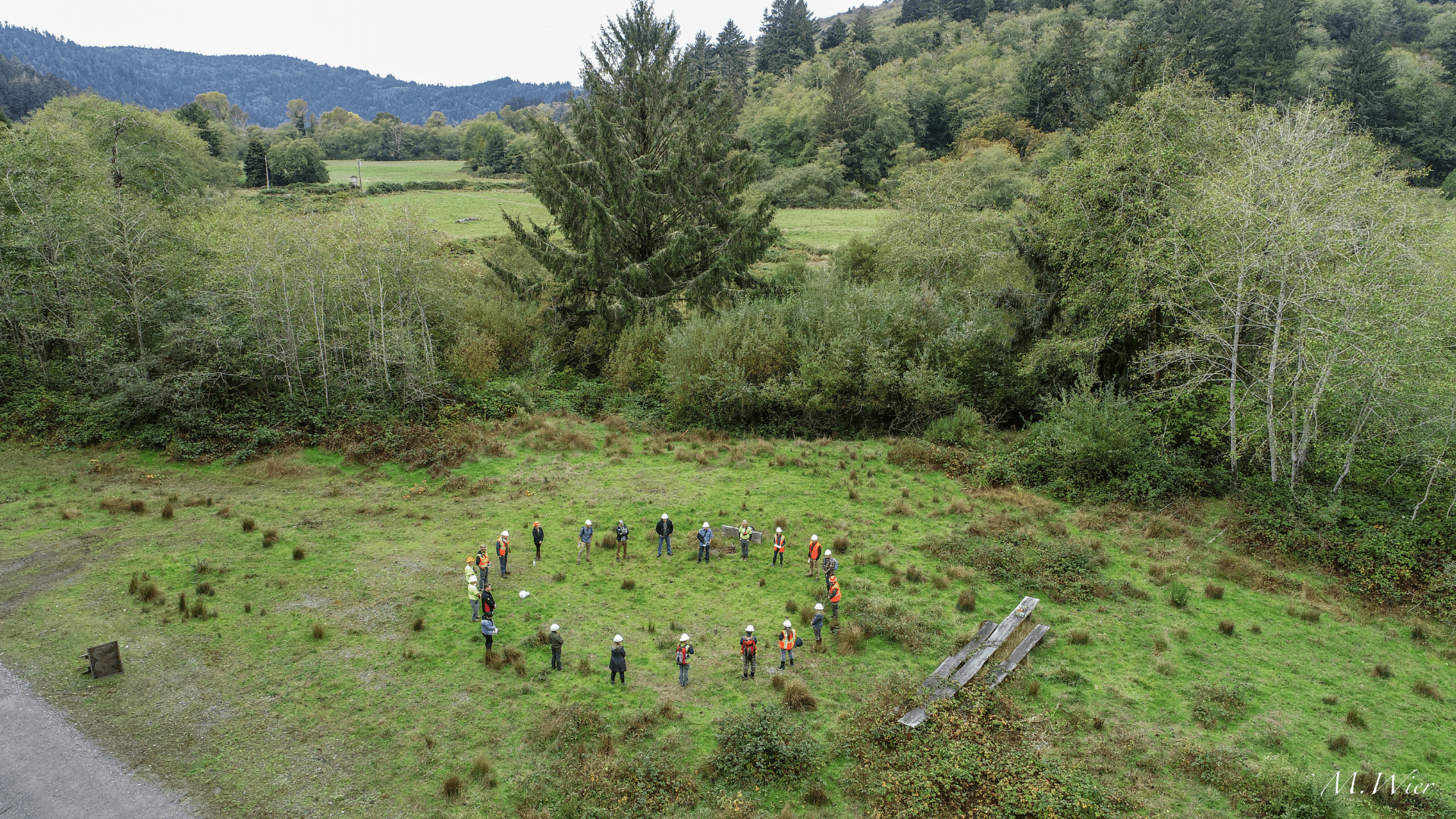
A Culturally Important Site
This site and the project are biologically and culturally important in a number of different ways.
Background Photo: Project partners and Yurok tribal members take a moment to express their gratitude and celebrate the beginning of construction on the site and the hopeful journey of healing the landscape; Credit: Mike Wier
The Yurok Tribe brings invaluable technical expertise and cultural knowledge and has been a part of the Project from its beginning. The Project has greatly benefited from the support of Tribal Council with critical involvement from the Cultural and Fisheries Departments. In the Fall of 2021, the Project invited the Yurok Tribe Construction Corporation, an all-Yurok crew, and the Yurok Tribe Fisheries Department staff to implement the first year of construction. Now completed, this successful restoration season lays a strong foundation for the Project’s future. Yurok Tribal involvement is central to a successful outcome as it is essential for California Tribal Nations and their dynamic and living cultures to be engaged in the future of their homelands.
Photo: First day of construction, Yurok Tribe Construction Crew and other project staff.
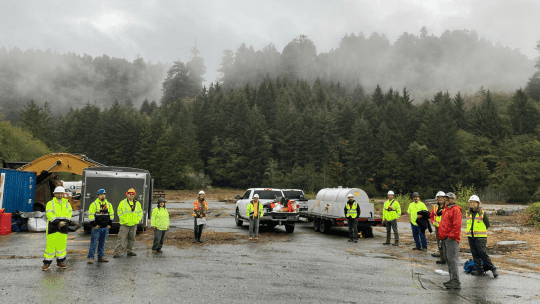
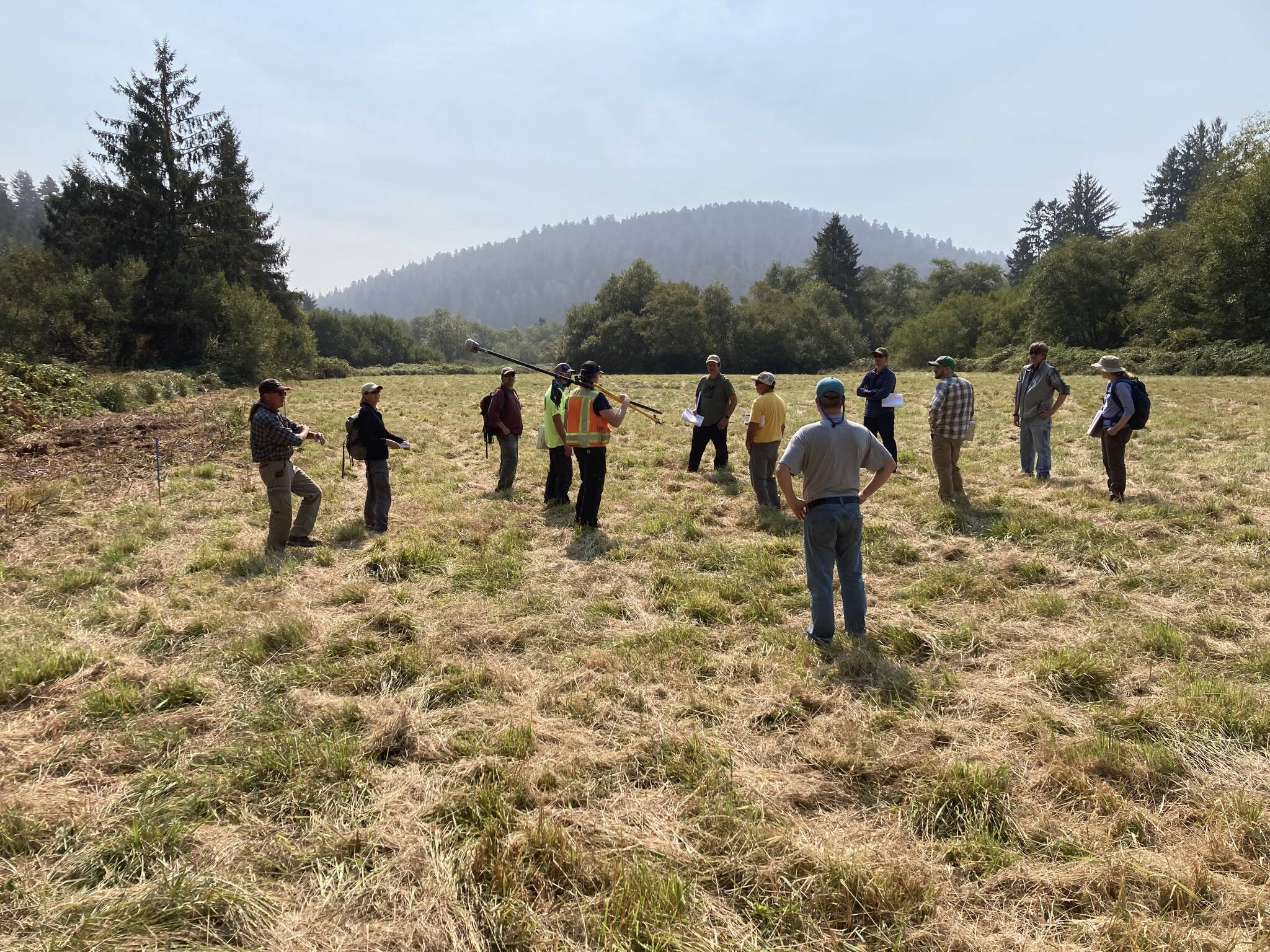
During the planning phase the project’s engineering team produced designs to remove the legacy sediment from the floodplain, pull the creek channel away from Highway 101, and reconnect the creek to backwater channels, ponds, and wetlands. Once the site is recontoured to restore the way water flows, the revegetation strategy will further set the trajectory for recovery.
Background Photo: Mary Burke

The coastal redwood eco-system is a climate refuge, with cool clean water flowing from upper Prairie Creek, shaded by tall redwoods and lush riparian vegetation that supports the rich foundation of the food web. Once disturbed, invasive plants will take their opportunity to colonize the area. In addition to the goal of restoring natural processes to the physical system, the project will restore a rich diversity of native vegetation and implement strategies to hold invasive plant species at bay.
Background Photo: Mary Burke

Revegetation is a physical approach that has a cultural impact. In addition to native revegetation being critical to restoring the ecosystem, many species of native plants play a culturally significant role with indigenous peoples, and, with restoration, comes the opportunity for strengthening cultural practices through ongoing stewardship and use.
Background Photo: Mike Wier
An Opportunity for Education
The collection of partners and funders on this project recognize the need for restoration, access, and education to go hand-in-hand for an integrated conservation approach. The property owner, Save the Redwoods League, is leading the initiative to create a new point of public access as a gateway to the adjacent landscape, protected and managed under Redwood National and State Parks.
Once the 20-acres of old mill site asphalt are removed, soil excavated from the floodplain will be used to landscape a welcoming trail gateway with educational signage that gives the opportunity to view the restored Prairie Creek and hike into the old growth redwoods. A core part of this vision includes the Yurok Tribe creating a village site to illustrate their culture.
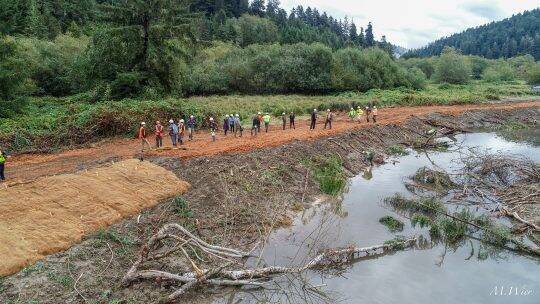
Prairie Creek Restoration Project Team on-site. Credit: Mike Wier.
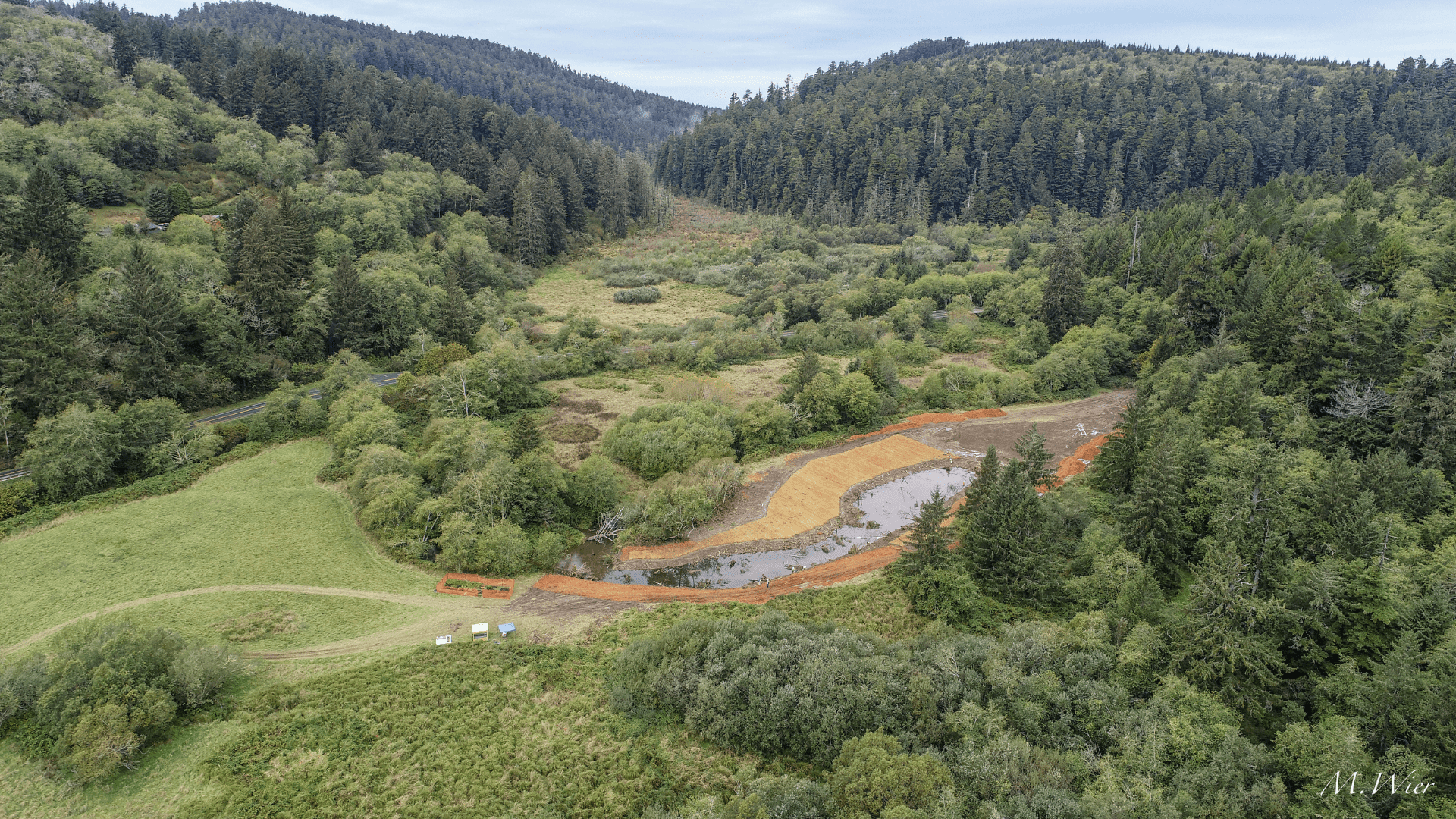
Vision for the Future
The project team has a 2025 goal for completion of construction and restoration in order for Save the Redwoods League to transfer the property to Redwood National Park. With this goal, the project is off to an inspiring start in more ways than one. Just before the close of 2021, and prior to the large rain storms that occurred, the project team successfully completed the first of five years of construction, finishing the restoration of two acres of backwater habitat.
Background Photo: Mike Wier
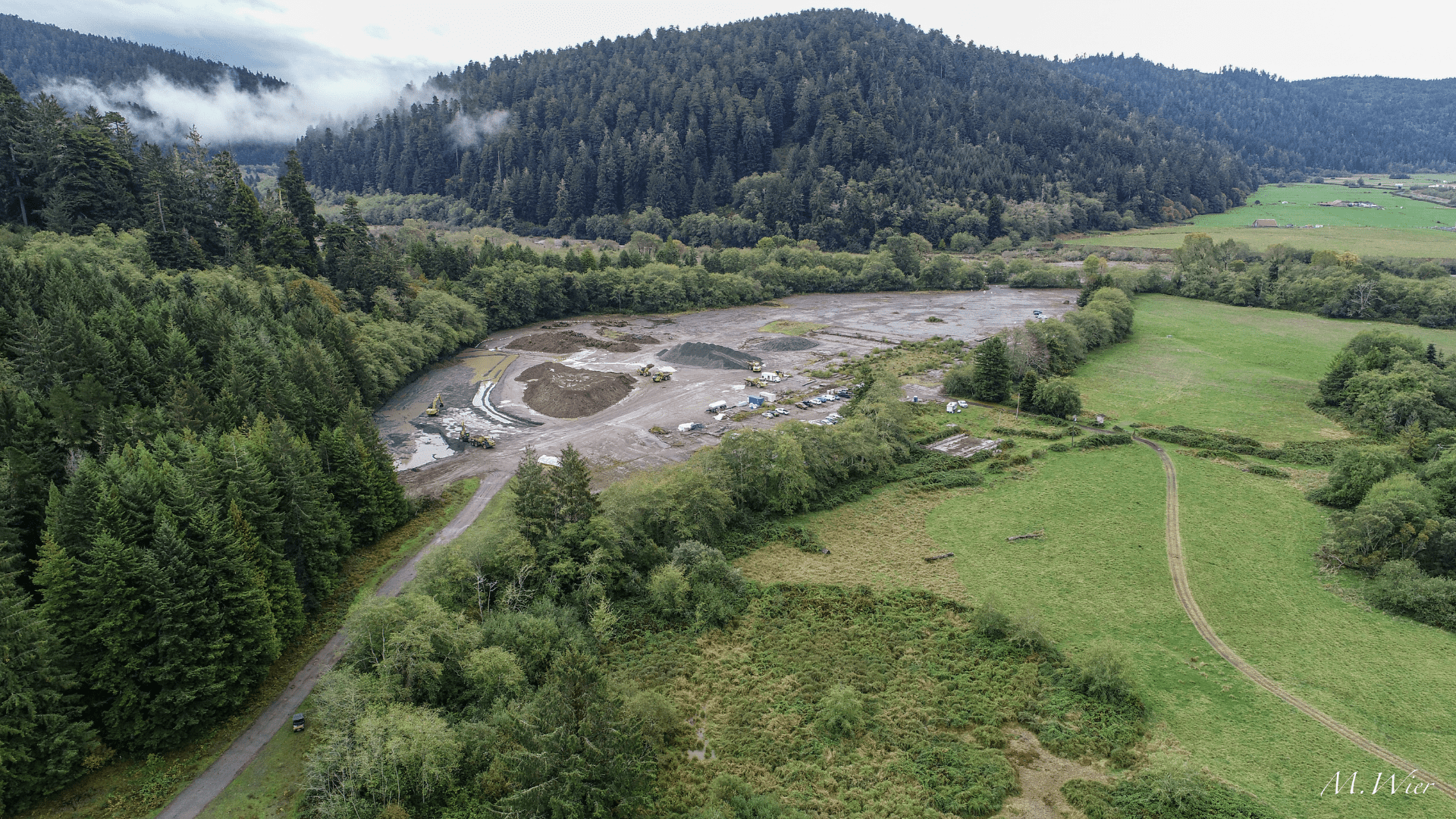
Launching into the second year, the project team has raised the funds to continue working toward the goal of restoring 16 acres of floodplain habitat to provide backwater wetlands and ponds for juvenile salmon and steelhead that are seeking slow water and rich food sources. A healthy 72mm juvenile coho salmon was captured during the project’s first monitoring event, once again bringing truth to the statement “build it and they will come.”
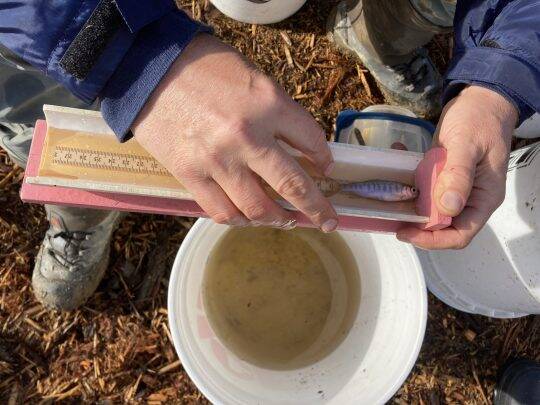
Healthy 72mm juvenile coho salmon captured during the project’s first monitoring event.
Background Photo: Mike Wier
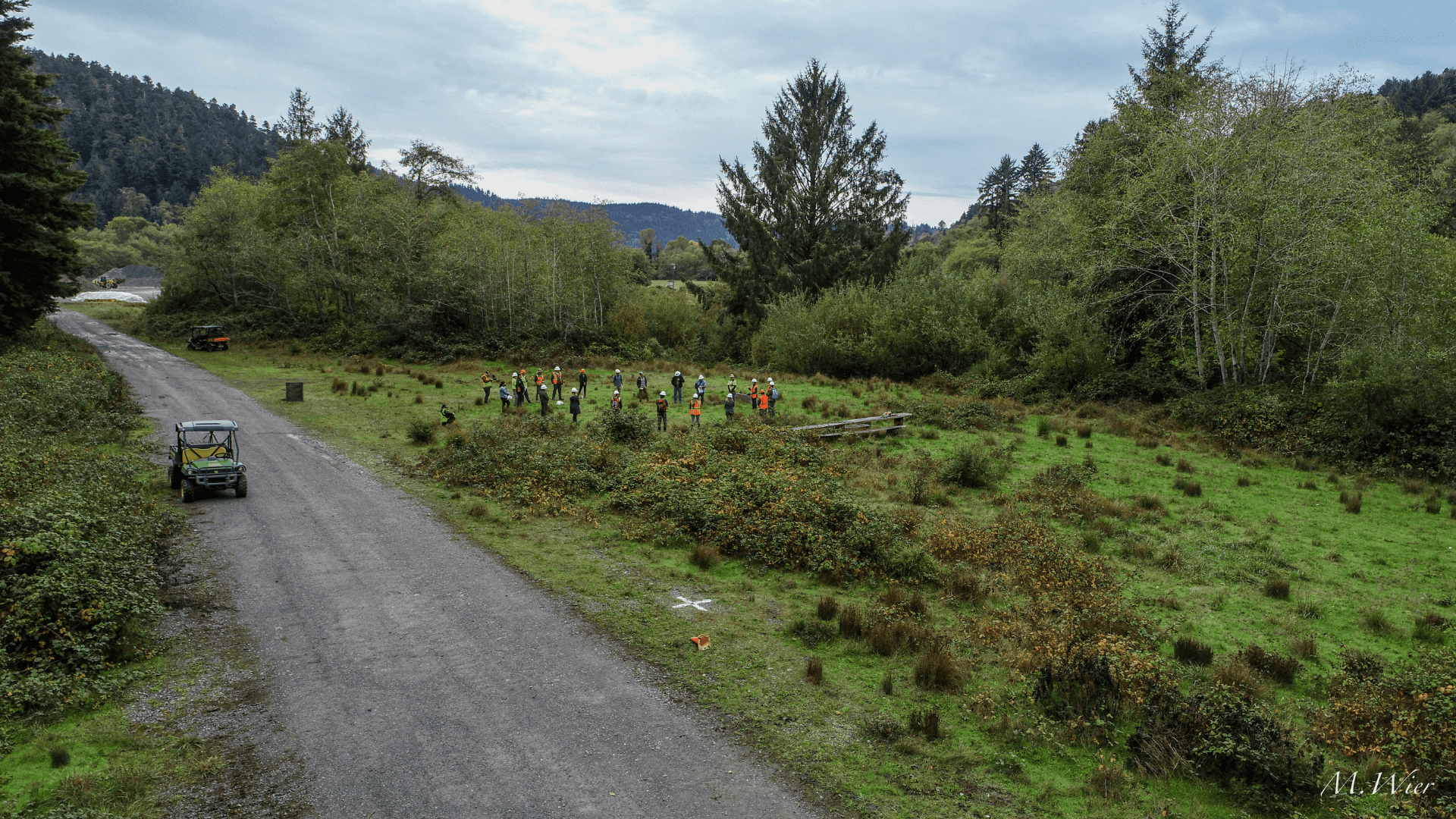
This project is a testament to the action that collaboration brings.
It has allowed us to see more clearly how diversity in its many forms remains at the heart of creativity as we lean on the ideas and expertise of not only our team at CalTrout, but also the ecosystem of partners that this project contains.
Background Photo: Mike Wier
This first season of construction has provided us with many lessons that will carry forward into the next four years of the project.
We are filled with hope at the opportunities for ecological and cultural revitalization that live within this project.
CalTrout Partners & Funders on Prairie Creek
Save the Redwoods League, California State Coastal Conservancy, NOAA, Wildlife Conservation Board, USFWS Coastal Program, Yurok Tribe, Redwood National and State Parks, CDFW, Northern Hydrology & Engineering, McBain & Associates, GHD, SHN, Lang, Railsback & Associates, Redwood Sciences Laboratory, Redwood Coast Action Agency.
Learn More
You can read more about CalTrout's involvement in Prairie Creek Floodplain Restoration Project here.
Stay up to date with this project by signing up for CalTrout's newsletter.
Support this project and others like it by donating to CalTrout today.

About the Author:
Mary is the North Coast project manager for projects on the Eel River, Mad River and Prairie Creek. In addition, Mary coordinates the CalTrout-organized Eel River Forum, a group formed to promote salmonid and ecosystem recovery of the Eel River. Ms. Burke has a M.S. degree from Humboldt State University where she gained experience and interest in freshwater and tidal wetland function for water quality and habitat benefits.




